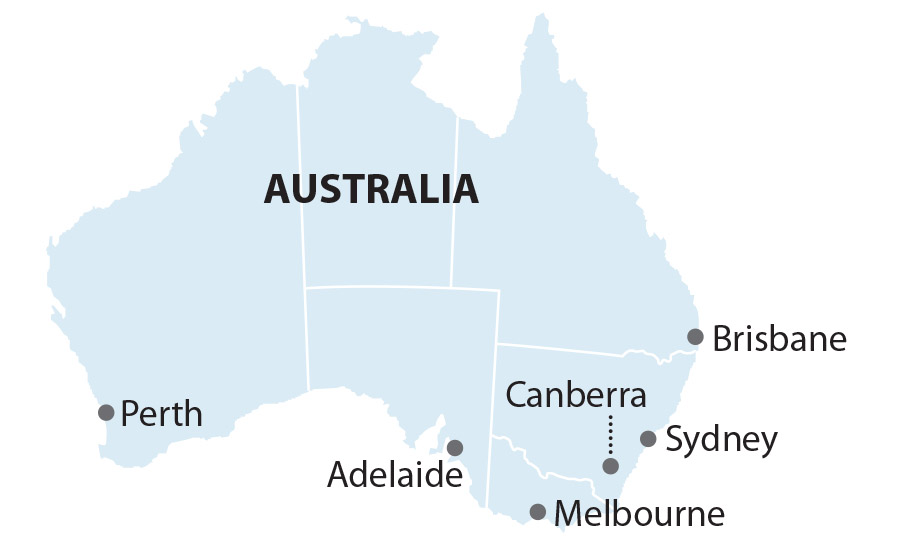IEEFA Australia: Battery storage, renewables, hydrogen and rare earths – investment and transition planning can create jobs now and into the future

October 21, 2019 (Australia): Employment will increase in renewable energy and battery storage installations – two of Australia’s fastest growing industries, while the hydrogen sector and supply of lithium and rare earth minerals will open further downstream processing opportunities into the future with the right policy settings, investment and transition planning, asserts a new IEEFA submission responding to the Australian government’s inquiry into the future of jobs in regional areas.
IEEFA’s submission to the inquiry Select Committee into Jobs for the Future in Regional Areas notes Australia must urgently prepare to assist regional and remote communities transition while accelerating investment in industries of the future.
“The inevitable global decline in thermal coal demand is part of a transition towards renewable energy that is already well underway, and this will affect regional and remote communities whether policy makers prepare or not,” says submission author Tim Buckley, director of energy finance studies with the Institute for Energy Economics and Financial Analysis (IEEFA).
“At its heart, it is a technology transition and inevitable, so Australian policy makers need to get cracking and plan for this long term decline.
“Foreign corporates dominate the Australian fossil fuel industry, and they have no priority to look after Australian communities. Their mandate is solely to maximise their shareholder wealth.
“In particular, Australia must accelerate investment in renewables and battery storage, hydrogen, lithium and rare earths to create regional jobs and grow industry hubs.
“An unplanned, chaotic transition will have far more serious impacts on Australia than one that has been well prepared for.”
IEEFA notes what is currently missing in Australia is the necessary long term transition planning to assist populations move away from polluting fossil fuel industries into alternative industries including renewable industries and technologies.
The NSW Department of Premier and Cabinet’s Hunter Valley team have made some good progress on a high level plan, and now is the time to leverage this into concrete, in-depth planning.
“Renewable energy investment and export opportunities for Australia are huge,” says Buckley.
“Australia is in a prime position to attract a wealth of renewable investment to progressively replace the slow but inevitable loss of thermal coal royalties from an industry in permanent terminal decline.
“While coking coal for steel production has a longer transition horizon, the International Energy Agency never-the-less still forecasts a slow, steady erosion of its demand profile in any carbon constrained future as steel scrap recycling rates rise and zero emissions hydrogen technologies are commercialised.”
IEEFA notes recent technological advances have made renewables and storage two of Australia’s fastest growing industries, while Chief Scientist Dr Finkel has long argued for a comprehensive plan to pursue domestic and export opportunities for the renewable energy-generated zero‑emissions hydrogen sector to potentially become one of the country’s largest export industries.
“This is where the real opportunity lies both in terms of jobs and investment,” says Buckley.
“Renewables are now the lowest cost, sustainable solution for Australia and potentially one of Australia’s largest export industries of the future.
“It is time for Australia to refocus on strong new growth markets within the resources and energy export sectors.
“The technological transition in energy markets sweeping the world will create demand for resources such as lithium and cobalt which Australia has in abundance.
“Investing in renewable energy infrastructure can build engineering and scientific capacity, leverage financial capacity, and create thousands of high value, sustainable jobs regionally.
“Re-establishing low cost energy supply domestically in turn can help rebuild the international competitiveness of Australia’s manufacturing industry, badly eroded by the trebling of domestic electricity and gas prices over the last decade.”
IEEFA notes the ongoing deflationary nature of renewable energy technologies globally indicates a looming sunset for the thermal coal mining industry. Longer term, the coking coal and liquefied natural gas (LNG) export industries are not immune, either.
“The current windfall in thermal coal royalties must urgently be put towards the development of a multi-decade transition plan for people and communities across Australia reliant on the thermal coal export industry,” says Buckley.
“Australia must step up and take advantage of low cost, sustainable solutions for Australia’s energy future – today, and through that investment in regional Australia, provide employment opportunities for the future.”
Read the submission: Select Committee into Jobs for the Future in Regional Areas – Submission by the Institute for Energy Economics and Financial Analysis
Media Contact: Kate Finlayson ([email protected]) +61 418 254 237
Author Contact: Tim Buckley ([email protected])











